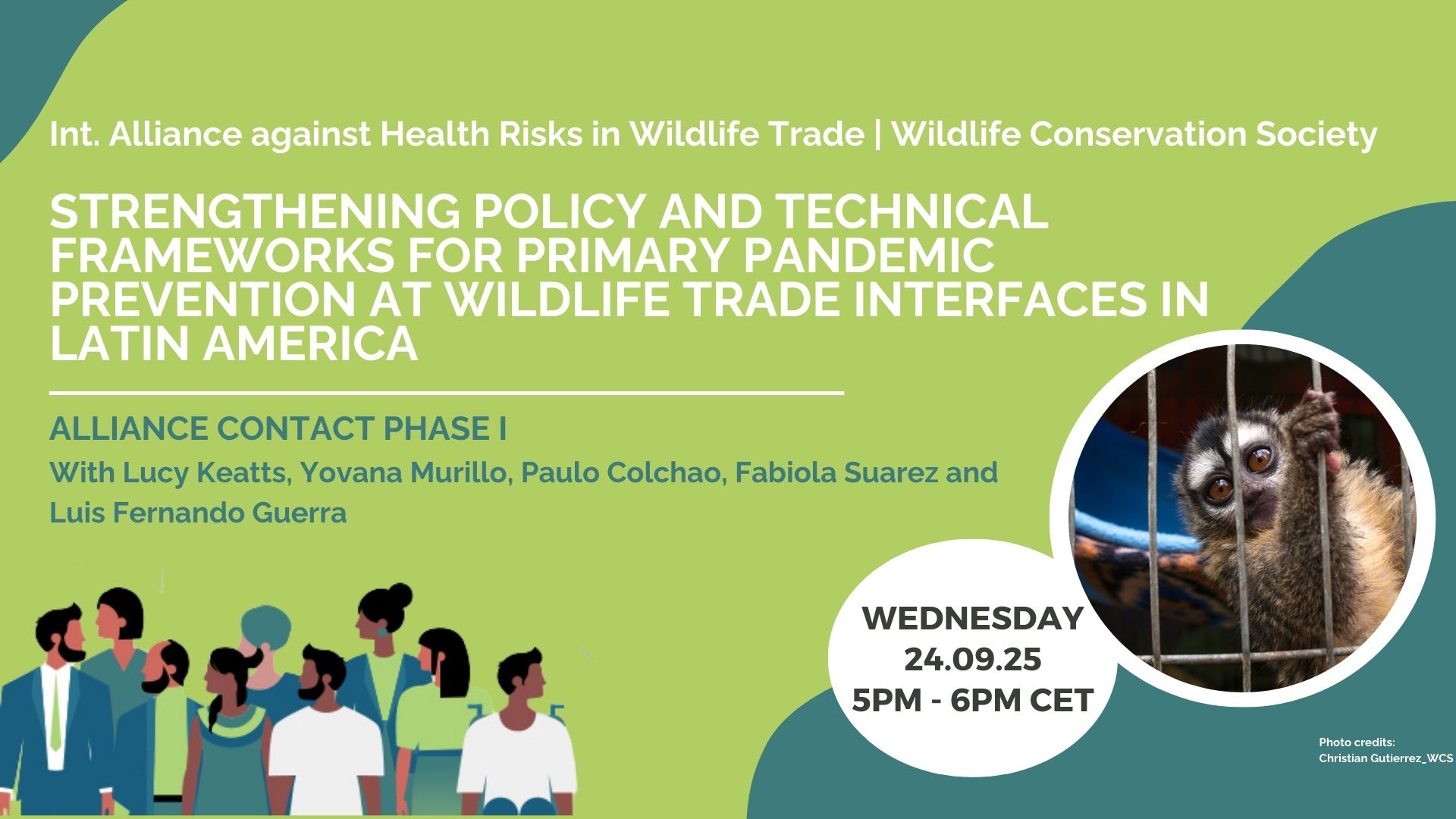
A large share of emerging infectious diseases of humans are zoonotic, with traded wildlife species known to be capable of hosting at least three-quarters of known zoonotic viruses. Wildlife markets, where stressed animals from various species are kept in close proximity, create high-risk conditions for zoonotic spillover, threatening human health, wildlife, and biodiversity. Along live wild animal trade chains, whether legal or illegal, risky interfaces and behaviors promote the transmission of pathogens that can affect human, domestic animal and wildlife health. However, in many countries there remains a lack of reliable data and informed frameworks to effectively address health risks in wildlife trade.
The Government Consultancy Facility – short CONTACT – Missions aim to use the Alliance´s broad expertise to provide context-specific multidisciplinary consultancy services to meet specific country needs regarding primary prevention measures and interventions at the wildlife-human interface. In the first CONTACT Missions the Government of Bolivia, Guatemala and Perú collaborated with the Wildlife Conservation Society and other Alliance experts to better understand wildlife trade dynamics and critical control points, identify key gaps and needs for health risk reduction from wildlife trade, and develop technical guidelines and policy change recommendations to address short-term gaps and reduce risks for zoonotic spillover in their country.
In this webinar, WCS health and counter-wildlife trafficking experts from the three countries shared insights from the collaborations with their government partners. Speakers highlighted challenges, successes and co-benefits to addressing health risks from wildlife trade through the CONTACT approach, including overall strengthening of awareness of health risks amongst decision-makers and of transectoral communication and coordination. The consultations demonstrated that One Health implementation to reduce health risks from wildlife trade requires balanced attention to both technical and governance dimensions. Key successes included diverse products from expert consultancies that addressed short-term national needs:
In Bolivia the collaboration led to the design of a platform structure for the country’s first system for health surveillance and a systematic analysis of zoonotic risks in trafficked wildlife and a legislative proposal to approve it.
Enhancing biosafety and wildlife management capabilities were the key recommendations in Guatemala, and a Zoonosis Risk Map highlighting critical control points for wildlife trade was created that serves as a strategic tool for surveillance and public policies regarding pandemic prevention.
In Perú emphasis was placed on understanding the risks involved in wildlife imports and exports. Other aspects assessed were the bushmeat trade and health monitoring in rescue centres. The results orient to improved intersectoral wildlife health regulations and management strategies for sustainable, health orientated wildlife trade.
A key challenge tackled in all projects was improving institutional multi-sectoral collaboration and clarifying responsibilities—issues that remain crucial for addressing long-term needs for pandemic prevention at wildlife-human interfaces. The projects made lasting impacts on reducing the risks associated with wildlife trade, elevating this issue amongst key government stakeholders and laying the groundwork for more coordinated and effective prevention and response to human and animal health risks from wildlife in the future.